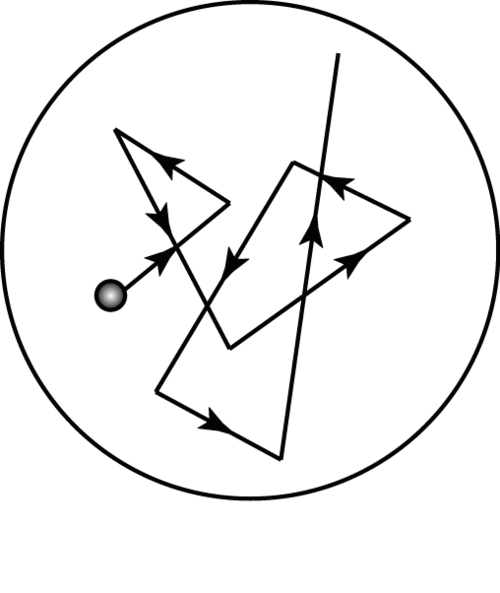Brownian dimension
 One way to determine an objects' dimension is to answer the following question
One way to determine an objects' dimension is to answer the following question
How does the number of circles of radius that are required to cover the object change with ?
For instance, a line of length can be covered by circles of radius , and . A square of side length can be covered by circles of radius , and . It is for this reason that we call a line 1 dimensional, and we call the square 2 dimensional. Here we'd like to ask, what is the dimensionality of a particle undergoing Brownian motion (diffusion)?
A particle undergoes Brownian motion through the action of a random force so that its displacement in a time interval behaves as . Because the particle is 0d, we might expect that its trajectory is 1d, as for particles in projectile motion.
Suppose we have a perfectly sampled trajectory of a particle, . We want to lay down a set of circles, , of radius to cover this path, i.e. so that every section of the particle's path in the 2d plane is overlaid by a portion of a circle . changes with according to . What is , i.e. what is the dimensionality of Brownian motion?
The answer is 2.
This section requires Javascript.
You are seeing this because something didn't load right. We suggest you, (a) try
refreshing the page, (b) enabling javascript if it is disabled on your browser and,
finally, (c)
loading the
non-javascript version of this page
. We're sorry about the hassle.
0 solutions
No explanations have been posted yet. Check back later!